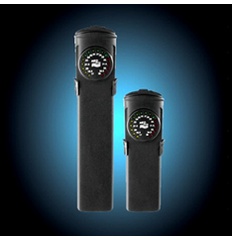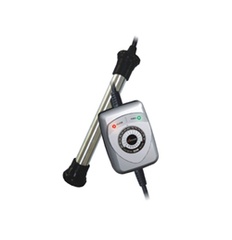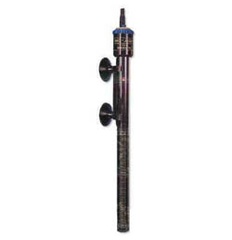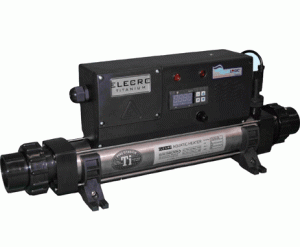 As winter approaches many of us in cooler climates must prepare our aquariums for inevitable cold ambient temperatures. This generally means the introduction of one of the hobby’s most evil pieces of equipment, the dreaded heater. If you’ve been around the aquarium hobby in any capacity for more than a few months chances are you’ve heard a heater horror story. Most heaters on the market are absolute garbage. Yeah I said it, garbage! However there are a few that have been put through the paces over the years and proven themselves noteworthy, dare I say trustworthy? When coupling a good heater with some amount of redundancy you can sleep easier knowing that even if a heater should fail, chances are it won’t lead to any catastrophic animal losses. Should you decide to skimp out and go cheap in this area chances are your entire system is a ticking time bomb. Now if you’re one of the lucky few that has a fish room kept at a constant ambient temperature, or live in a region that stays stable enough to avoid heaters… the rest of us are jealous and you can go on living your stress-free lives without heaters at all, and skip this post completely.
As winter approaches many of us in cooler climates must prepare our aquariums for inevitable cold ambient temperatures. This generally means the introduction of one of the hobby’s most evil pieces of equipment, the dreaded heater. If you’ve been around the aquarium hobby in any capacity for more than a few months chances are you’ve heard a heater horror story. Most heaters on the market are absolute garbage. Yeah I said it, garbage! However there are a few that have been put through the paces over the years and proven themselves noteworthy, dare I say trustworthy? When coupling a good heater with some amount of redundancy you can sleep easier knowing that even if a heater should fail, chances are it won’t lead to any catastrophic animal losses. Should you decide to skimp out and go cheap in this area chances are your entire system is a ticking time bomb. Now if you’re one of the lucky few that has a fish room kept at a constant ambient temperature, or live in a region that stays stable enough to avoid heaters… the rest of us are jealous and you can go on living your stress-free lives without heaters at all, and skip this post completely.
There are two main ways a heater can “fail”: 1.) Heater stops working completely. If you tend to have good luck this may be your fate, and any diligent aquarium observer would catch this rather quickly. Generally speaking no major issues can arise from this assuming you catch it in time. 2.) Heater “sticks on”, meaning the heater continues to heat the tank at full power even once the set temperature is reached. This is the one we hear about more frequently, likely because an entire system can crash due to overheating. This is the one we really want to avoid at all costs.

This may look like a heater and a redundant controller, but it is not! This is a heating element with an external thermostat.
It should be noted that some aquarium heaters have internal thermostats (temperature is selected directly on heater) while some are just heating elements with an external thermostat and controller. The latter is not a form of redundancy, rather should be treated the same as a heater with an internal controller with redundancy applied elsewhere.
Now let’s look at a few options on how we can prevent disaster and protect the lives of our animals.
Good: A good option is to start with a heater that has been on the market for quite some time with little to no failures reported. My go-to model for over a decade has been the Ebo/Eheim-Jager series. These are solid heaters coming with a one year warranty, although the accuracy of internal thermostat leaves something to be desired. Generally the actual holding temperature is within a couple degrees of what you set it at, and they can be calibrated if you see fit. As with most parameters in a reef tank the consistency is more important than an actual target number, so I won’t be throwing my Jagers out the window anytime soon. Another model which has quickly been put to use in our office due to the manufacturers claims is the Cobalt Neo-Therm. We’ve ran several units for just shy of two years with no issues to report thus far, with the internal thermostat proving quite accurate. Neo-Therms come with a three year warranty which tells me the manufacturer is very confident in their product, which leaves me feeling warm and fuzzy. However, should the internal thermometer on either option fail, you could be in big, big trouble.
Better: While choosing a dependable heater sized appropriately for your tank is a good start, redundancy is truly the key to a reliable heating scheme. Instead of one heater, use two smaller heaters with wattages that add up to your necessary wattage based on system volume. This way if one heater “sticks on” it’s less likely to overheat your system prior to you catching it.
Best: Your best option is to use two undersized heaters as mentioned above, both connected to a dedicated heater controller (or potentially one heater with good single-stage controller). My trusted heater controller is a dual-stage Ranco controller. These things are absolutely bulletproof in my experience, and I’ve had several units in continuous use for over five years, with many hobbyists reporting considerably longer consistent use with zero hiccups. Unlike full aquarium controllers Ranco’s are an industrial temperature controller with that being it’s only purpose, which they do very, very well. I’ve had three “all-encompassing” aquarium controller (the big brand these days) temperature probes fail on me in one way or another. Nothing catastrophic in my experience, but the probe failed it’s purpose nonetheless. A good friend of mine who recently was awarded RC TOTM was using an “all-encompassing” aquarium controller for redundancy measures, and one of the circuit boards failed. The default set point on this controller for temperature was 18.5°F, which told his titanium heating elements to turn on. Unfortunately by the time he caught it all was lost. When contacted what did the manufacturer state? ‘You should be using some other form of redundancy for heater control, and our unit for heater monitoring.’ One thing to note regarding Ranco controllers is that they can be applied to temperature control in many industries, so be sure to purchase one from an aquarium supplier as they sell a unit with a saltwater approved temperature probe. A random Ranco from eBay seller XYZ likely does not have a saltwater probe. This “best” option costs under $300, which is a no-brainer when many hobbyists spend that much money on just a few frags or fishes.
Superb: The “Best Option” above is the furthest redundancy I’ve personally ever installed on any clients aquarium. However should you be a big baller with a massive aquarium containing some very pricey livestock you should look into the Aqua Logic Titanium In-Line Heaters. I won’t get into these units much as I have no first hand experience. Seeing how the smallest model pulls 1.5 KW and costs just shy of $1,000, they’re much larger than the majority of hobbyists needs. Suffice to say these are totally excellent from aquarists I’ve spoken with that use these. Personally I would still put these on a Ranco controller for added redundancy.
So there you have it, multiple ways to easily and relatively affordably protect your system from an evil, albeit oftentimes necessary, piece of equipment.













0 Comments